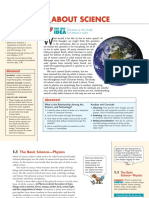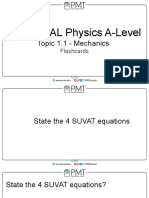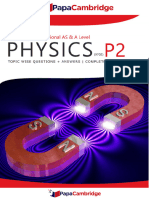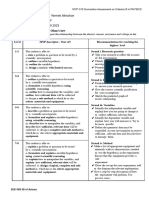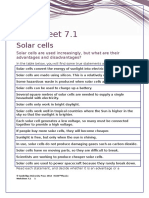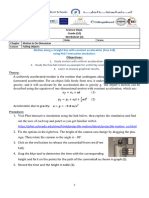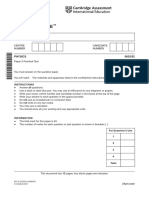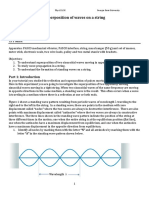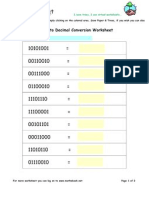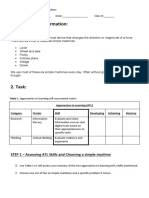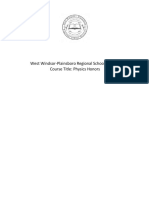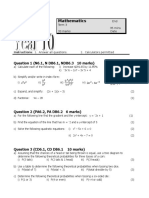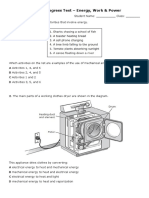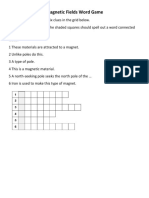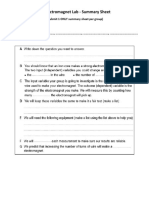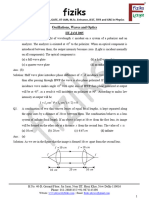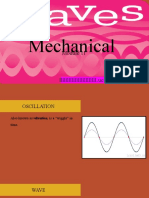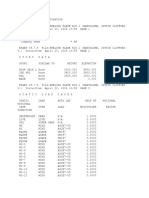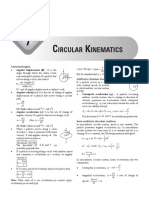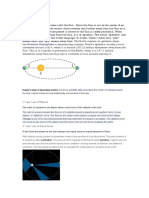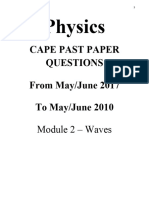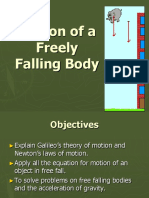Unit Name
Topic 6: Circular Motion and
Gravitation
Total Number of Lessons
8 ( 5 teaching hours)
Subtopic
Topic 6.1 Circular motion
Number of Lessons
Essential Idea
A force applied perpendicular to its displacement can result in circular motion.
Nature of Science
Observable universe: Observations and subsequent deductions led to the realization that the force must act radially inwards in
all cases of circular motion. (1.1)
Learning Objective
(Skills, Content and
Knowledge)
Understandings:
Teaching Methodology and Resources
Utilization:
Period, frequency, angular
displacement and angular
velocity
Centripetal force
Centripetal acceleration
Applications and skills:
Identifying the forces
providing the centripetal
forces such as tension,
friction, gravitational,
electrical, or magnetic
Solving problems involving
centripetal force, centripetal
acceleration, period,
frequency, angular
displacement, linear speed
Suggestions
Guidance:
Banking will be considered qualitatively only
Only comparatively recently has
the magnetic compass been
superseded by different
technologies after hundreds of
years of our dependence on it
Modern medical scanners rely
heavily on the strong, uniform
magnetic fields produced by
devices that utilize
superconductors
Particle accelerators such as the
Large Hadron Collider at CERN rely
on a variety of precise magnets for
aligning the particle beams
Aims:
Aims 2 and 9: visualizations
and angular velocity
Qualitatively and
quantitatively describing
examples of circular motion
including cases of vertical
and horizontal circular
motion
frequently provide us with insights
into the action of magnetic fields;
however, the visualizations
themselves have their own limitations
Aim 7: computer-based simulations
enable the visualization of
electromagnetic fields in threedimensional space
Lesson 1 Angular Measurements
Powerpoint Angular measurement
Guided Exploration PhET Ladybug Revolution
Completion of Skeleton Notes on Circular Motion
Resources
Lesson 2 Centripetal Acceleration &
Centripetal Force
Eduweblabs simulation: Centripetal Acceleration
Resources
Lesson 3 & 4 Centripetal Force & Centripetal
Acceleration Practice I.A. Task
Students plan, gather & process data and write a
report on a practical investigation into centripetal
force or centripetal acceleration.
Resources:
PPTS:
6.1.1 Angular Measurement
6.1 Circular Motion
Online Simulations:
http://phet.colorado.edu/en/simul
ation/legacy/rotation
Online Simulations:
http://eduweblabs.com/Database/Lab_
FoldersP/CAccel/CAccel.html
Task Sheets:
Apparatus:
Force sensors & Go-Links, Metre rules,
strong tape, string, glass or plastic
smooth tubes, rubber stoppers of
different sizes, plastic cable ties.
Links to Theory of Knowledge
Foucaults pendulum gives a simple observable proof of the rotation of the earth, which is largely unobservable. How can we
have knowledge of things that are unobservable?
International Mindedness (Reference to Local, National and World Issues)
. International collaboration is needed in establishing effective rocket launch sites to benefit space programs
�Subtopic
Topic 6.2: Newtons law of
gravitation
Number of Lessons
Essential Idea
The Newtonian idea of gravitational force acting between two spherical bodies and the laws of mechanics create a model that
can be used to calculate the motion of planets.
Nature of Science
Laws: Newtons law of gravitation and the laws of mechanics are the foundation for deterministic classical physics. These can be
used to make predictions but do not explain why the observed phenomena exist. (2.4)
Learning Objective
(Skills, Content and
Knowledge)
Understandings:
Teaching Methodology and Resources
Suggestions
Utilization:
Newtons law of gravitation
Gravitational field strength
Applications and skills:
Describing the relationship
between gravitational force
and centripetal force
Applying Newtons law of
gravitation to the motion of
an object in circular orbit
around a point mass
Solving problems involving
gravitational force,
gravitational field strength,
orbital speed and orbital
period
Determining the resultant
gravitational field strength
due to two bodies
The law of gravitation is essential
in describing the motion of
satellites, planets, moons and
entire galaxies
Comparison to Coulombs law (see
Physics sub-topic 5.1)
Aims:
Guidance:
Newtons law of gravitation should be extended to
spherical masses of uniform density by assuming
that their mass is concentrated at their centre
Gravitational field strength at a point is the force
per unit mass experienced by a small point mass
at that point
Calculations of the resultant gravitational field
strength due to two bodies will be restricted to
points along the straight line joining the bodies
Aim 4: the theory of gravitation when
combined and synthesized with the
rest of the laws of mechanics allows
detailed predictions about the future
position and motion of planets
�Lesson 1 - Newtons Law of Gravitational Force
Starter: Foucaults Pendululm video & discussion
Simulation Investigation Modelling Gravity using
PhET Gravity Force Lab simulation & Logger Pros
Graphical Analysis module.
Resources:
Lesson 2 Gravitational Force & Orbits
Simulation Investigation Gravity & Orbits
Powerpoint Gravity & Circular Motion
Notes Skeleton Gravity & Circular Motion
Resources:
Lesson 3
Eduweblabs: Swing simulation task
Data Analysis Task Roller Coaster 2
Powerpoint- Concept Test : Gravity & Circular
motion
Resources:
Lesson 4 Practice Questions on Gravity
Students complete practice questions on Circular
Motion and Gravitation.
Resources:
YouTube video: Foucaults Pendulum
https://www.youtube.com/watch?
v=aMxLVDuf4VY
Online simulation:
http://phet.colorado.edu/sims/html/gra
vity-force-lab/latest/gravity-forcelab_en.html
Online Simulations:
http://phet.colorado.edu/en/simulation/gravit
y-and-orbits
Task Sheets:
Gravity & Orbits - available @ PhET
(UTeach Middle School PhET Team version)
Online Simulations:
http://eduweblabs.com/Database/Lab_Fold
ersP/AmuseSW/AmuseSW.html
Worksheets:
Swing Simulation Task Sheet
Swing Simulation Data Sheet
Roller Coaster 2 Data Sheet
Topic 6 Student Workbook
Links to Theory of Knowledge
The laws of mechanics along with the law of gravitation create the deterministic nature of classical physics. Are classical physics
and modern physics compatible? Do other areas of knowledge also have a similar division between classical and modern in their
historical development?






